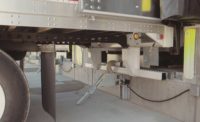When new construction begins on a structure, tunnel, roadway or any other large project, safe and dependable lighting is always a challenge. Weather conditions, the availability of natural light, the size of the project or tunnel, the time of the year or even the availability of power can be dramatic factors in determining whether or not a job site has adequate lighting. All agree that adequate lighting is necessary for the safety and productivity of the workers, and for the quality of the work to be executed properly.
The challenge for many contractors is the different phases construction sites may transition to throughout the development of a project. As tunnels go deeper and farther away from power sources, the ability to light the work area safely is extremely challenging. The limits of ten-foot string lights can cause problems as the length of the string lights increases deeper into a tunnel create power accessibility issues.
As walls are erected and tunnels are dug, visibility and installation challenges may become unpredictable as various shadows and accessibility become too great to overcome with traditional string lighting since the light is not spread evenly.
OSHA standards
Although they meet OSHA standards for safe lighting, the metal halide lights that have been traditionally used create harsh shadows and are very bright, often too bright for the workers since they create glare. Fluorescent and incandescent lights also provide adequate lighting to meet OSHA standards with less glare, but the heat given off by those lights make work spaces tough on workers. Plus, keeping the bulbs operating is labor-intensive.
Tunnel-mining projects also uncover certain aspects of the project that can be unpredictable. Often hazardous vapors and gasses come to the surface and create a serious safety issue if not planned for in the equipment used. Since hazardous gasses and vapors are often present in many tunnels, the need for explosion proof string lights is a must.
Global infrastructure grows
Transportation and storm water retention systems are more vital across the globe as population centers become more concentrated and cities grow rapidly. The demand for tunneling increases across the United States, Canada, Mexico, India, Brazil and China. As tunnel infrastructure becomes more prominent, lighting solutions that are explosion proof and versatile in their ability to not overheat, draw too much energy and have easy power accessibility grows.
A temporary tunnel LED lighting string light system has been designed for high output illumination and daisy chain connections across a total length of one mile away from the power source. It provides operators with a temporary work light solution for tunnels and underpasses up to a mile in length.
This temporary tunnel string light consists of industrial grade LED lamps. Each globe light is equipped with a high output LED bulb that delivers more light output than a 100 watt incandescent. The 10 watt LED bulb draws ten percent the electrical power of a standard 100 watt bulb. Each LED light screws into a molded lamp socket and the bulb is enclosed in a bird cage style plastic guard.
The electrical cable has a maximum amperage capacity per size of the cable. The more units chained together, the higher the combined amp draw. This combined amp draw must not exceed the amperage rating of the wiring of the string light. Also, voltage drops off over distance. So the further away from the power source you get, the lower the end voltage is. Both of these issues can be resolved by increasing cable size, but this increases weight of each unit, as well as cost to manufacture and sales price of the unit.
Traditional string lights designed for up to 100 watt incandescent lamps work fine for small construction jobs or temporary lighting. For large tunnel, viaducts, subways, and any underground system or project without permanent lighting, standard string lights can be a setback. Some of these projects have miles of area to cover with no current power sources, meaning power sources have to be supplied at the end of each run of string lights.
Temporary lighting technology
A solution for these temporary lighting environments allows up to ten string lights to be daisy chained together spanning nearly a mile in length. This allows for a single source of power to control nearly a mile of light across a broad spectrum.
There’s no need for multiple power sources for the incandescent string lights. Previously, multiple workers were needed to simply keep the bulbs fresh on incandescent string lights to maintain safety of the workers using the lights. The tunnel light string solution means lower operating costs due to less power being used, less crowded work spaces due to the number of workers no longer need for maintenance, and also a safer work environment for the existing workers themselves since there is not the traffic associated with the maintenance of the traditional bulbs.
This tunnel string light is configured to operate with 277 volt electrical current. LED lamps provide more and better quality illumination than 100 watt incandescent string lights without the high heat and fragile glass construction of traditional lamps. With the low energy requirements of LED lamps, mile long assembly units are now physically possible.
These LED lamps are suitable for wet areas, have longevity, resistant to damage from impacts and vibrations, and consume less energy than standard lamps. Machined aluminum housings, cast aluminum guard, tempered glass lamp globe, and abrasion resistant cord make this a durable unit that resists damage from chemicals, abrasions, vibrations and impacts.
This LED technology provides a mile-long solution that is low cost, safe, durable and efficient without giving off too much heat. This technology allows for customizing string lights for extremely long distances with nor reduction in light as the distance gets longer.


